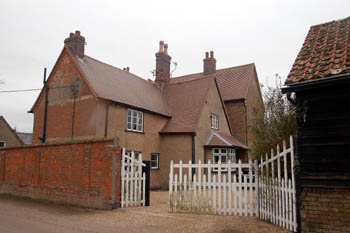Village Farm Stanford

Village Farm Stanford March 2008
Bedfordshire & Luton Archives & Records Service has no early documentation on Village Farm. In 1927 Stanford was valued under the Rating Valuation Act 1925; every piece of land and building in the country was assessed to determine the rates to be paid on it. The valuer visiting Village Farm [DV1/H50/20] found it owned by the Whitbread Estate and tenanted by Charles Herbert Inskip (he had been there since at least 1903 and was still there in 1936 according to directories), who paid £426 per annum rent. The farm contained 243 acres and valuer commented: "Large farm in Stanford Village. Good house and large amount of buildings, mostly market gardening land…Electric light in all building, own plant put in by tenant. Water from main. Gravelly soil, bad in hot summer". Another hand has written: "Perhaps too many buildings - good. Good house - electric light. Funny farm to value - nearly all very sharp land. Green manuring succeeds - as against dung".
The farmhouse contained three living rooms, a kitchen, scullery, pantry and dairy with three "good" bedrooms and one small one as well as a bathroom and lavatory. The homestead comprised a brick and slate range of garage, harness room, small garage, two loose boxes and two stalls near the house. The west block comprised a small greenhouse measuring 9 feet by 18 feet, a wood and slate open shed and cowhouse for five beasts and a six bay open shed. The north block comprised a barn and granary and an engine house as well as a wood and slate electric light plant with lofts and a small lean-to of three bays. The centre block comprised a wood and tile pigsty and cowhouse for four beasts, a wood and slate seven bay cart hovel and mixing place, a wood and slate five bay open shed and a wood and tile stable for five and two stalls. The east block comprised a chaff house, stabling for five and two stalls. The rickyard had a wood and tile lorry shed and potato chipping rooms with a concrete floor, a small shed with thatch and an open cart shed and granary. Intriguingly the valuer also notes a "small chapel" in the rickyard.